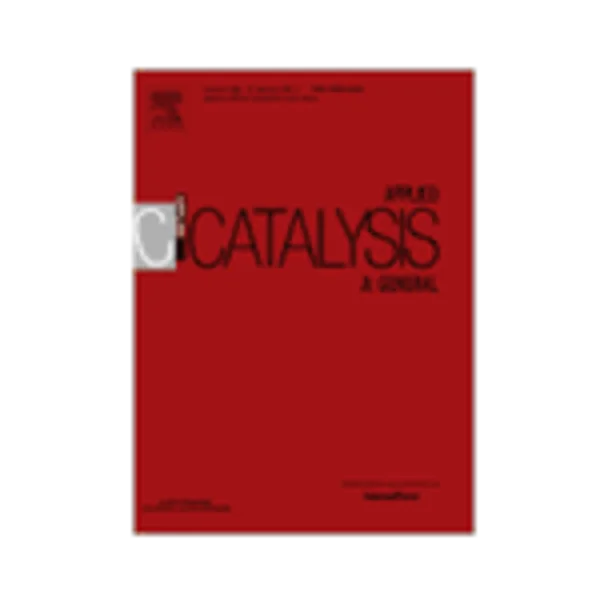-
the role of rwgs in the dehydrogenation of ethylbenzene to styrene in co2
جزئیات بیشتر مقاله- تاریخ ارائه: 1392/07/24
- تاریخ انتشار در تی پی بین: 1392/07/24
- تعداد بازدید: 1015
- تعداد پرسش و پاسخ ها: 0
- شماره تماس دبیرخانه رویداد: -
the addition of co2 to the dehydrogenation of ethylbenzene (eb) to styrene over promoted and un-promoted vanadia, iron, and chromia catalysts on alumina improves the yield of styrene, in comparison with the use of n2 as diluent. depending on the catalyst, eb conversion increases 5–10%, while selectivity does not change significantly. the potassium promoted vanadium catalyst shows the highest co2 conversion for dehydrogenation with the largest increase in eb conversion. the activity of these catalysts in the reverse water–gas-shift (rwgs) reaction, in the presence and absence of the dehydrogenation, is very different. vanadium catalysts exhibit the lowest co2 rwgs activity. the presence of coke on the catalyst suppresses the rwgs reaction over chromium and iron catalysts, but improves the activity of the vanadium catalyst. this is attributed to hydrogen spill-over from the coke to the metal catalyst. a two-step mechanism with a hydrogen spill-over is proposed for the eb dehydrogenation in co2. step-response experiments show that the redox mechanism for the rwgs and the two-step pathway for dehydrogenation in co2 are the dominant routes. a slight rwgs activity of the bare alumina support is attributed to an associative mechanism.
مقالات جدیدترین رویدادها
-
استفاده از تحلیل اهمیت-عملکرد در ارائه الگوی مدیریت خلاقیت سازمانی و ارائه راهکار جهت بهبود
-
بررسی تاثیر ارزش وجوه نقد مازاد بر ساختار سرمایه شرکت های پذیرفته شده در بورس اوراق بهادار تهران
-
بررسی تأثیر سطح افشای ریسک بر قرارداد بدهی شرکت های پذیرفته شده در بورس اوراق بهادار تهران
-
بررسی تأثیر رتبه بندی اعتباری مبتنی بر مدل امتیاز بازار نوظهور بر نقد شوندگی سهام با تأکید بر خصوصی سازی شرکت ها
-
تأثیر آمیخته بازاریابی پوشاک ایرانی بر تصویر ذهنی مشتری پوشاک ایرانی (هاکوپیان)
-
بررسی تأثیر تمرینات عضلات دمی با استفاده از روش imt بر ظرفیت حیاتی تنفس
-
بررسی آزمایشگاهی ضریب آبگذری دریچه های استوانه ای
-
ملاحظات اقلیمی و مدیریت انرژی در معماری بومی (مطالعه موردی: استان هرمزگان)
-
real time implementation of h∞ loop shaping robust pss for multimachine power system using dspace
-
postglacial vegetation history as recorded from the subalpine lake ribno (nw rila mts), bulgaria
مقالات جدیدترین ژورنال ها
-
مدیریت و بررسی افسردگی دانش آموزان دختر مقطع متوسطه دوم در دروان کرونا در شهرستان دزفول
-
مدیریت و بررسی خرد سیاسی در اندیشه ی فردوسی در ادب ایران
-
واکاوی و مدیریت توصیفی قلمدان(جاکلیدی)ضریح در موزه آستان قدس رضوی
-
بررسی تاثیر خلاقیت، دانش و انگیزه کارکنان بر پیشنهادات نوآورانه کارکنان ( مورد مطالعه: هتل های 3 و 4 ستاره استان کرمان)
-
بررسی تاثیر کیفیت سیستم های اطلاعاتی بر تصمیم گیری موفق در شرکتهای تولیدی استان اصفهان (مورد مطالعه: مدیران شرکتهای تولیدی استان اصفهان)
-
بررسی نهادهای موثر و ارزیابی حاکمیت شرکتی و جایگاه آن در نظام بانکداری اسلامی و ایران
-
واکاوی جایگاه سواد رسانه ای انتقادی در نظام آموزش و پرورش ایران
-
بررسی عوامل موثر در تصمیم گیری زنان برای سقط عمدی جنین و نگرش اعتقادی و شرعی آنان در این باره
-
طرح حفظ مشتری (مطالعه موردی برای یک شرکت مشاوره شغلی و کاریابی در دو بافت خدمات b2c و b2b)
-
risks leading to cost overrun in construction projects: a systematic literature review




سوال خود را در مورد این مقاله مطرح نمایید :